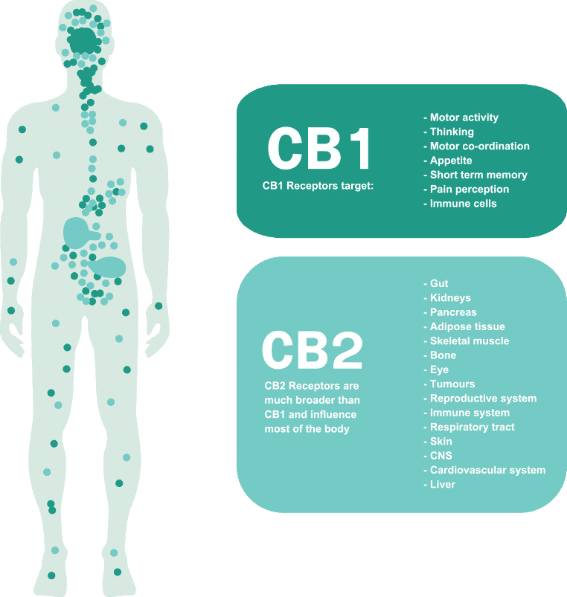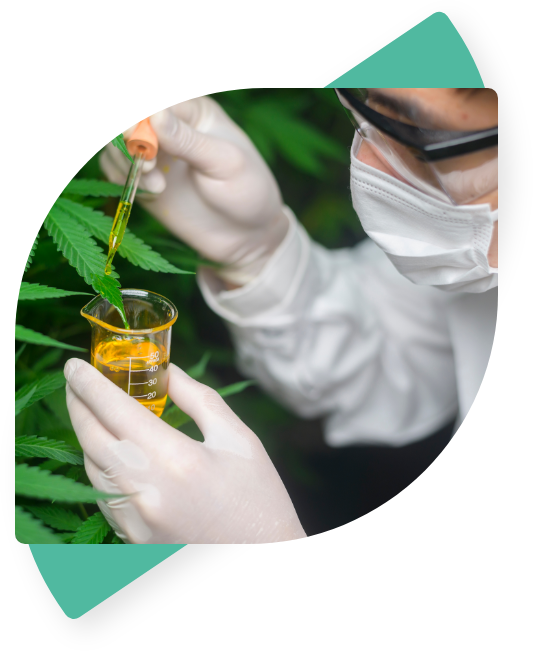
Endocannabinoid System Explained – How Does It Work?
The endocannabinoid system plays a significant role in how the human body interacts with hemp. Hemp and cannabis are versatile plants used by millions of people around the globe for different purposes. Every effect that CBD and THC have on the human body is thanks to the endocannabinoid system.

What Is The Endocannabinoid System?
Some people consume cannabis for its psychoactive effects. Others use hemp for its medicinal properties. Overall, cannabis and hemp can produce strong effects for the same reason: The human body possesses a biological system that interacts with cannabinoids such as THC and CBD.
What Is the Endocannabinoid system? In short, the endocannabinoid system is the largest neurotransmitter system in the human body and is imperative in maintaining health. This key bodily system regulates a wide range of bodily functions. Most importantly, it maintains homeostasis.
How Homoeostasis Works
To understand the body’s endocannabinoid system, it’s important to start with one of the most essential concepts in biology: Homeostasis. The role of the endocannabinoid system is to maintain homeostasis or equilibrium in the body.
In order for our bodies to perform their best, the biological systems found within us (ex: the cardiovascular system and digestive system) must regulate themselves to keep conditions in an ideal middle range.
An easy example of homeostasis is temperature. When it’s too hot outside, our bodies sweat in an attempt to cool down, which is our muscles working to generate more heat.
The endocannabinoid system is involved in multiple physiological processes that affect mood, pain sensation, appetite, metabolism, memory, sleep, bone development, and immune function. All vertebrate species possess one.

Cannabinoid Receptors Within the Endocannabinoid System
The three main components of the endocannabinoid system are cannabinoid receptors, endocannabinoids, and metabolic enzymes.
Cannabinoid Receptors
Cannabinoid receptors lie on cell surfaces throughout the body. They transmit information about changing conditions to the cell’s inside. This, in turn, sparks a cellular response. The two major cannabinoid receptors in the endocannabinoid system are CB1 and CB2 receptors. They are not the only cannabinoid receptors in the endocannabinoid system, but they were the first ones to be discovered and, as a result, are the best understood.

- Cannabinoid receptors lie on cell surfaces throughout the body. They transmit information about changing conditions to the cell’s inside. This, in turn, sparks a cellular response.
- The two major cannabinoid receptors in the endocannabinoid system are CB1 and CB2 receptors. They are not the only cannabinoid receptors in the endocannabinoid system, but they were the first ones to be discovered and, as a result, are the best understood.
Endocannabinoids
Endocannabinoids are endogenous cannabinoids that bind to and activate cannabinoid receptors, similar to the way that plant cannabinoids do. These cannabinoids are produced naturally by cells in the human body and help regulate many biological functions.
- THC
- CBD
- THCA
- CBDA
- CBG
- CBGA
- THCV
- CBN
- CBC
- CBCA
The two main endocannabinoids in the body are anandamide and 2-AG. These two endocannabinoids are composed of fat-like molecules inside cell membranes and are synthesized when needed.

2-Arachidonoyl glycerol (2-AG)

Anandamide

Metabolic Enzymes
Metabolic enzymes perform various cellular functions that are vital for homeostasis. When working with the endocannabinoid system, metabolic enzymes get rid of endocannabinoids after they have been used. FAAH is an enzyme that breaks down anandamide, while MAGL breaks down 2-AG.
These enzymes ensure that endocannabinoids are used only when they are needed. This is one of the ways endocannabinoids differ from other molecular signals in the body like classical neurotransmitters or hormones: These often worked seconds, and sometimes, minutes past when they are needed to.
The three main components of the endocannabinoid system–cannabinoid receptors, endocannabinoids, and metabolic enzymes–can be found inside almost every major biological system. When something disrupts a cell’s equilibrium, the body relies upon these components to get the system working properly, thus enstating homeostasis.

How the Endocannabinoid System Regulates Neurons
Neurons are brain cells that communicate with each other by sending electrochemical signals to one another. Each neuron must listen to its partner neuron in order to decide whether to fire off a signal.
However, neurons do not like to give out too much signal. In fact, a neutron that gives out too many signals can become toxic. This is where endocannabinoids come in.
If a neuron coordinates with an overactive neuron, it will also become unstable. When this occurs, the listening neuron will create endocannabinoids exactly where it is connected to the overactive partner neuron. These endogenous cannabinoids will then bind with CB1 receptors on the overactive neuron, transmitting a signal that instructs it to stop sending unnecessary signals. This brings things back to homeostasis.
How Endocannabinoids Work Within the Brain
Endocannabinoids move in reverse, which is why they are known as retrograde signals. Usually, information flow between neurons travels in only one direction: from the sender that releases neurotransmitter signals to the receiver that listens to the signals.
Endocannabinoids permit receiver neurons to regulate how much output they receive. They do so by sending retrograde signals back to the overactive neurons.
The brain is not the only organ that seeks to maintain homeostasis. Every other main system of the body, from the immune system to the digestive system, must carefully regulate how its cells are functioning.


Regulating Inflammation With Endocannabinoids
When the immune system suffers from an infection, it responds with inflammation as a natural protective reaction. The main purpose of inflammation is to reduce damaged tissue as well as remove pathogens or germs which can cause infection. Inflammation is a result of immune cells and fluid cells moving into the affected area to help regain homeostasis.
Inflammation must reduce after the affected area heals so it does not become dangerous. If the immune system inappropriately activates, malicious conditions such as chronic inflammation and auto-immune diseases can arise.
How Do THC And CBD Interact With The Endocannabinoid System?
The main reason that plant cannabinoids provide psychoactive and medicinal effects is because they interact with the endocannabinoid system.
- THC induces a temporary high because it activates the CB1 receptors located within the brain. It does not interact with CB1 receptors in the same way that natural endocannabinoids do: Metabolic enzymes that would normally break down endocannabinoids after they are used do not work on THC, so THC lingers for a longer period of time.
- CBD, the most common non-psychoactive cannabinoid found hemp and cannabis, interacts with various receptors in the brain. So, although plant cannabinoids may interact with the same receptors as endogenous endocannabinoids, they also interact with other receptors. This is what causes the effects of endocannabinoids and plant cannabinoids in the body to differ.
CBD can also influence the number of endocannabinoids present in the brain. This is referred to as “endocannabinoid tone.
Have you tried CBD yet?
Still have questions?
Our care team is ready and waiting to hear from you.



